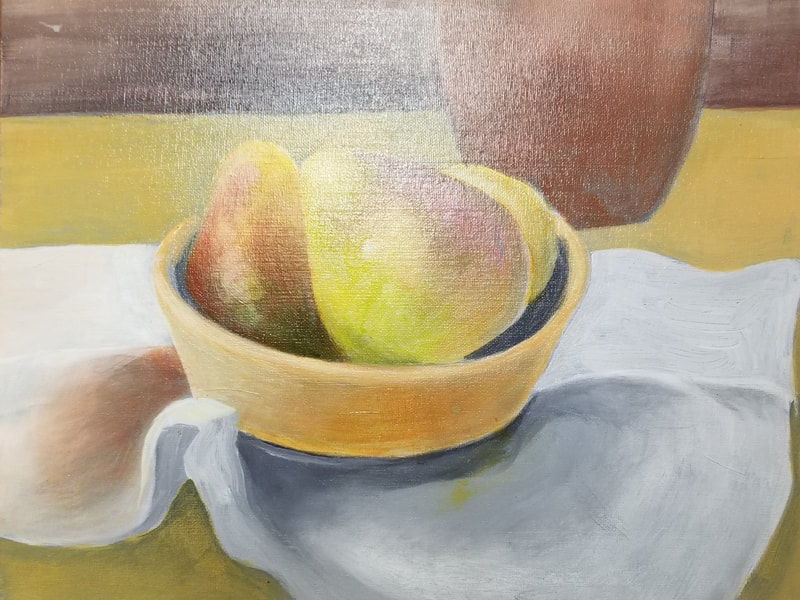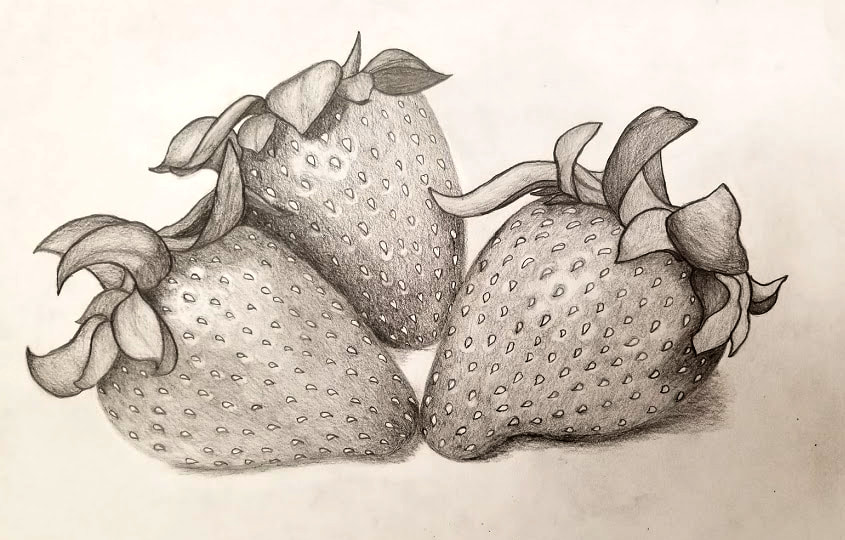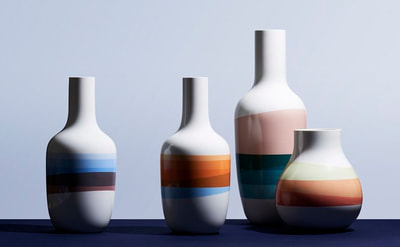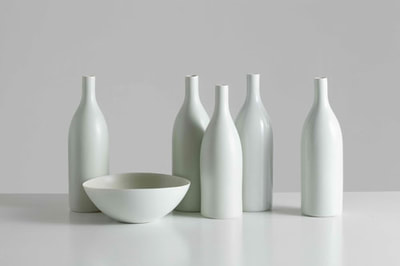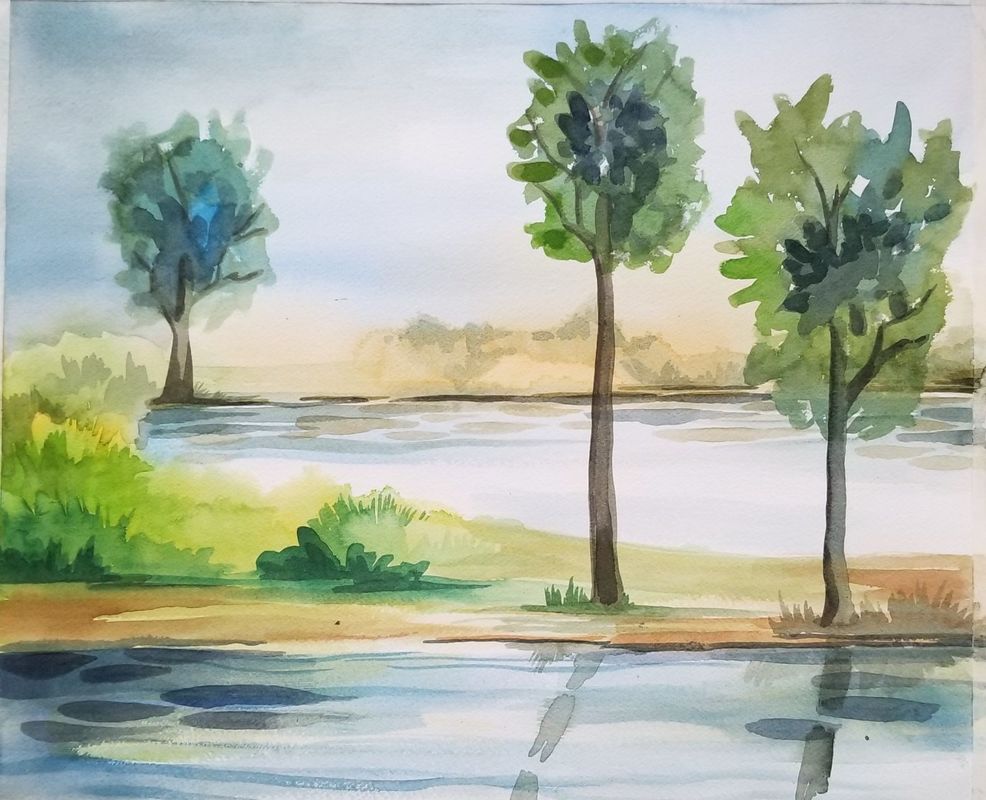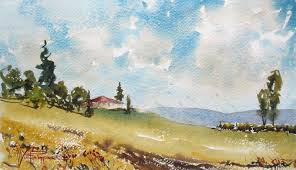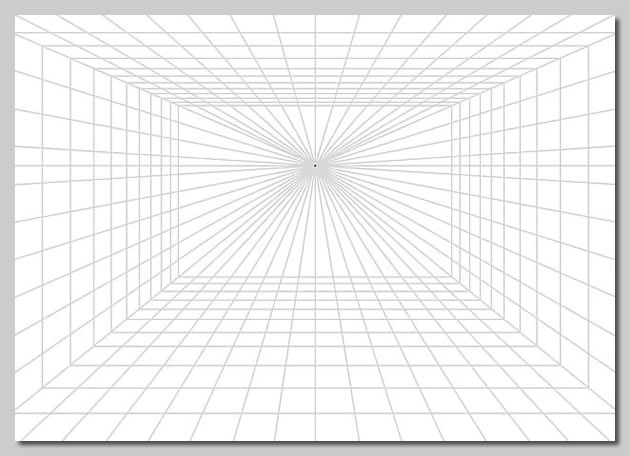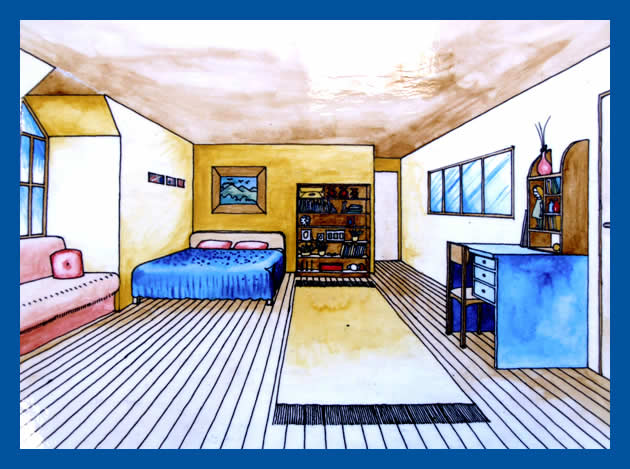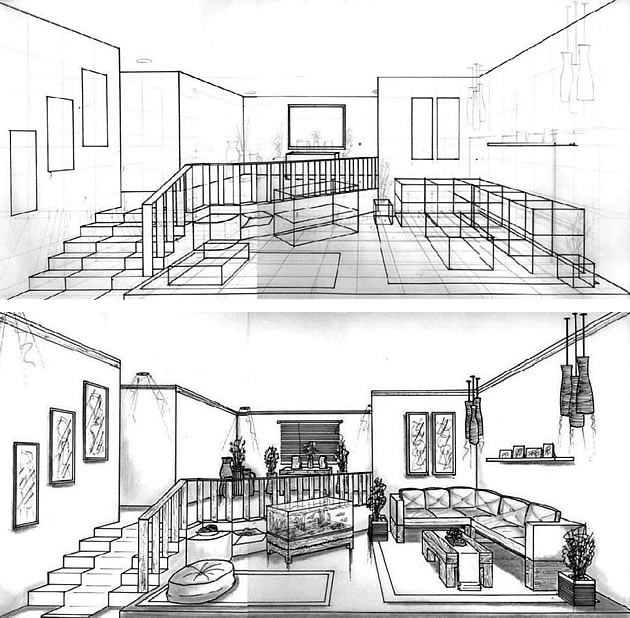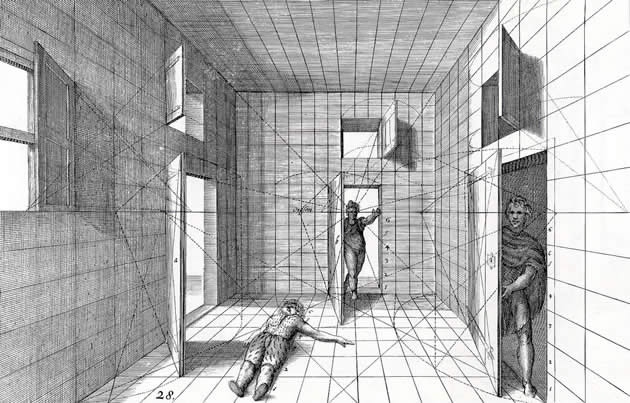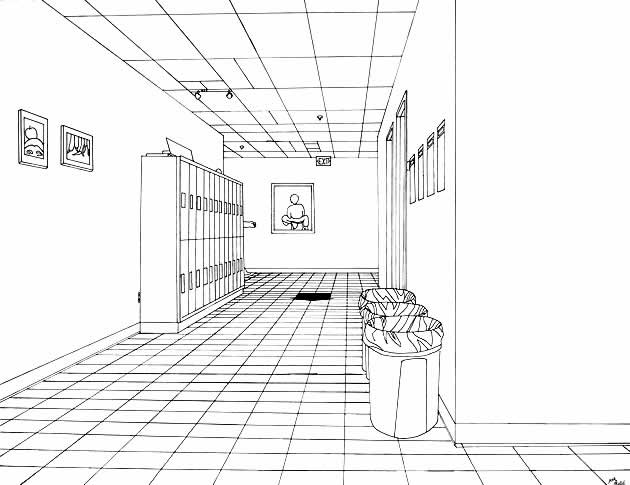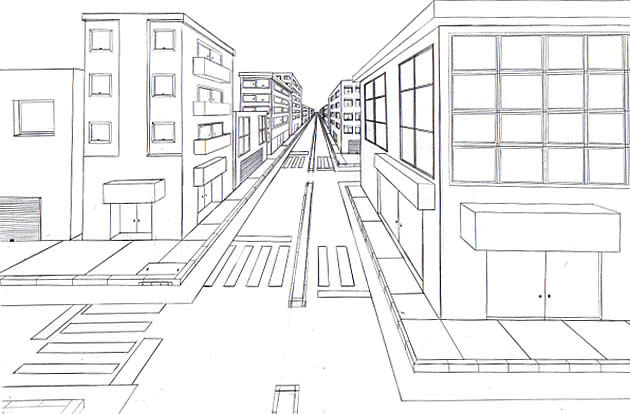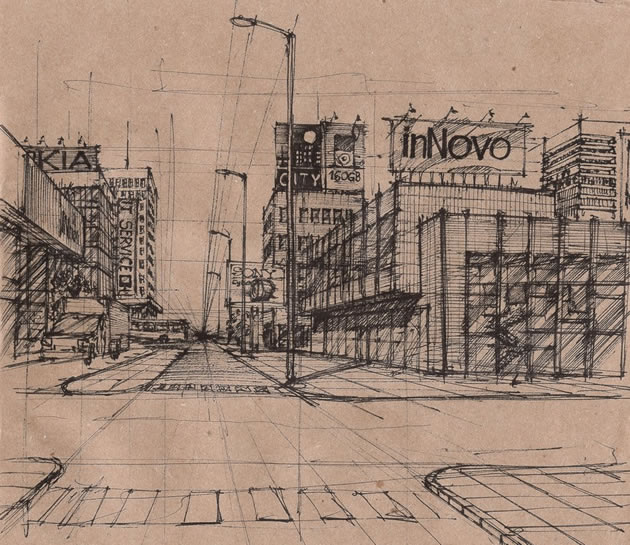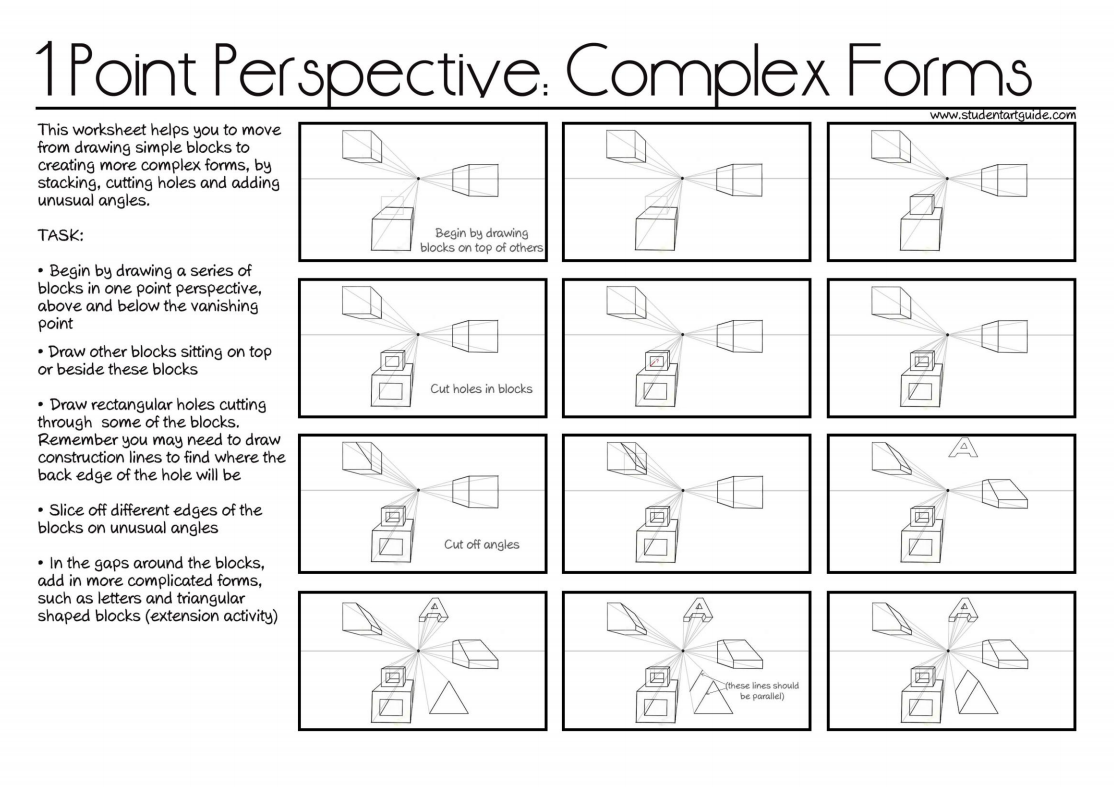Vocabulary Terms for 2D Visual Art Acrylic Painting Project
Project Goal: Create a rendering of translucent bottles while utilizing the Three Tonality System. Directions: Working form a still life or photographic reference, create a pen and ink rendering that demonstrates pure whites, midtones and pure blacks to promote contrast and the illusion of space on a flat surface.
Rubrics:
The most common perspective drawing lesson is a one point perspective room. Interiors combine a multitude of skills and can be made as challenging or involved as required. Perspective flooring allows you to practise dividing surfaces into equal spaces, while the questions of how to draw a window in perspective; furniture / desks / beds; or adjoining corridors etc provide a challenge regardless of your ability level. To gain ideas about how you might approach drawing interiors in perspective, we have included a range of examples below, including bedrooms, living rooms, kitchens and hallways. Drawing a room in one point perspective can be great practise for those who wish to later pursue interior design, architecture or for those who are studying Design Technology at high school. The illustration above shows a one point perspective grid (this may be downloaded and printed for classroom use) which may be drawn on directly or traced over, using a lightbox. To understand how to draw a room in one point perspective, please view our step-by-step video: The most challenging aspect of perspective is drawing curving or circular forms. These are typically sketched freehand, inside squares or rectangles to help get proportions correct. By the completion of this exercise, you should be able to:
These concepts are explained in the following video: Drawing a road and surrounding cityscape (either imagined or observed from real life) is a great follow-up activity to the previous exercises. A one point perspective street scene typically combines repetitive manmade elements with stacked, cut and angular forms. This exercise can be as challenging or minimal as desired, allowing able students to move ahead and produce detailed, elaborate drawings. This is a good example of how to draw a road in perspective, with basic rectangular blocks modified to create a city scene. One point perspective drawings are often dry and analytical. Once mastered, however, knowledge of perspective can be used to create rich, expressive observational drawings, such as this cityscape drawn using black biro pen on brown paper.
This video explains how to equally divide items in one point perspective, allowing you to draw fence posts, lamp posts, and equally spaced windows or buildings. By the completion of this exercise, you should be able to:
This is explained in the following video tutorial: Drawing block lettering in one point perspective is a relatively straight-forward task, suitable for a homework activity. The following video demonstrates how to do this: This worksheet illustrates how to stack blocks, cut away portions and add unusual angles in a one point perspective drawing, creating gradually more complex forms. By the completion of this exercise, you should be able to:
The following video helps to explain how to draw one point perspective drawing step-by-step: |
